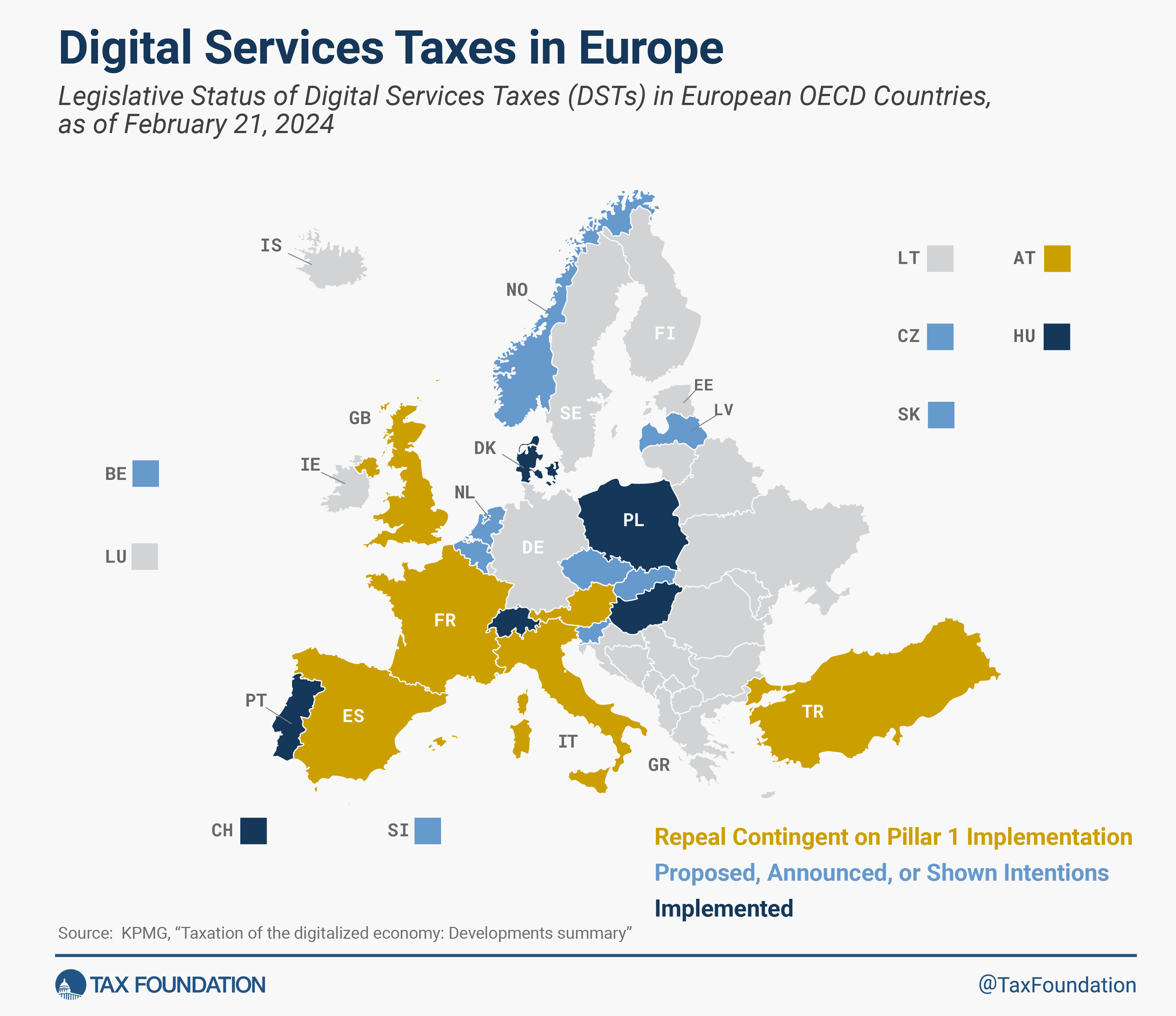How We Got Here and a Proposal for Change (Part II)
“The law on ODP after Cellect is unpredictable and retroactively penalizes patent owners who have prosecuted child applications in good faith.”
In Part I of this two-part article, we reviewed the origins of the judicially-created doctrine of obviousness-type double patenting (ODP) and laid out the background on how the U.S. Court of Appeals for the Federal Circuit arrived at the 2023 In re Cellect decision. Here, we delve deeper into the case law and explain a simple fix for many present-day ODP problems.
In re Gilead
In Gilead Sciences, Inc. v. Natco Pharma Ltd., 753 F.3d 1208, 1217 (Fed. Cir. 2014), the question presented was “[c]an a patent that issues after but expires before another patent qualify as a double patenting reference for that other patent.” Id., 1211-1212. The court in Gilead concluded “under the present circumstances of this case, that it can.” Id., 1212.
The question in Gilead was framed in this manner because courts were struggling with how to apply longstanding double patenting rules based on changes to patent law. Prior to the Uruguay Round Agreements Act of 1994 (URAA), patent term was limited to 17 years from issuance. For patents filed prior to the URAA (when submarine patents were common and prosecution often took many years), issue date was used as the critical date for calculating patent term and thus the critical date for ODP—that is, a later-issued patent with patentably indistinct claims would necessarily have a later expiration date and could therefore be limited to the term of an earlier-issued patent. See, e.g., Novartis Pharms. v. Breckenridge Pharm., 909 F.3d 1355, 1360, (Fed. Cir. 2018) (“Novartis I”) at 1362. After the URAA, the issue date was no longer relevant to calculating patent term. Patent term changed from 17 years from issue date to 20 years from the filing date. Gilead, 1217-1218. That is, for patents filed after the URAA, the filing date determines patent term. The natural corollary is that the filing date would be the critical date for post-URAA ODP analysis.
In Gilead, however, the applicant had done something unusual. Gilead had filed two patents—the ’375 patent and ’483 patent—both with nearly identical claims and identical specifications. The sequence of filing and issuance is shown below.
Instead of filing the ’483 Patent as a child of the earlier-filed ’375 patent (as is typical), Gilead filed the ’483 Patent as the first patent in a new family. Gilead at 1210. The two patents had different examiners and the later-filed ’483 Patent happened to issue before the earlier-filed ’375 patent. Id., 1210-1211. However, because the ’483 patent was filed later and as part of anew family, its term extended beyond the term of the ’375 patent. Based on the earlier issue date of the ’483 patent and existing authority governing pre-URAA applications, Gilead argued that the later-issuing ’375 patent could not serve as the basis for an obviousness-style double patenting rejection for the earlier issuing ’483 patent. Id., 1209.
The majority in Gilead, however, was concerned that Gilead was exploiting the change in the law to improperly extend patent term through a second, later-filed patent The majority correctly recognized that patent issue date was no longer relevant to patent term under the URAA and held that, in this instance, the later-issued ’375 patent could serve as the basis for a double patenting reference against the ’483 patent. Id., 1211-1212.
The majority’s analysis focused on the expiration date as the critical date because of the posture of cases dealing with this issue at the time. The defendants in Gilead advanced the argument that patent expiration date should determine whether a patent qualifies as an ODP reference. See Gilead at 1211-1212; Ex Parte Pfizer, No. 6,469,012, 2010 WL 532133, at *15 (B.P.A.I. Feb. 12, 2010) (“at issue is [ ] whether patent term or patent issue date determines if a claim of a patent issued based on a post-GATT application qualifies as a double patenting reference against a claim of a patent issued based on a pre-GATT application.”). Patent owners argued (consistent with the law at the time) that issue date was the appropriate date. Id. The majority in Gilead treated the issue as one or the other—that is, in announcing a broad new rule on double patenting, Gilead assumed that issue date or expiration date were the only two choices. If issue date was not the correct date to use, then expiration date must be correct. Gilead, 1216-1217.
In reality, neither date makes much sense for post-URAA ODP analysis. For example, Gilead cites MPEP §804.I.B.1 for the proposition that “looking to the expiration date instead of issuance date is consistent with the PTO’s guidance.” Gilead, 1216-1217. But MPEP §804.I.B.1 discusses two copending patent applications and “that a terminal disclaimer is required for the later of the two applications.” Gilead, 1216-1217. By “later of the two applications,” MPEP §804.I.B.1 generally means later filed of the two applications. MPEP §804.I.B.1. Gilead simply assumes that the later-filed application “hypothetical[ly] anticipates to have a later expiration date.”
As another example, the patent owner in Gilead argued that an emphasis on expiration dates was inconsistent with numerous prior cases that “describe the double patenting bar as applicable to the ‘second’ or ‘later’ issuing patent.” Gilead at 1214-1215. However, the majority distinguished those cases as applying to “patents to which the URAA did not apply and, critical to a double patenting analysis, to patents for which the expiration date was inextricably intertwined with the issuance date.” Id. But under the URAA, the filing date is now “inextricably intertwined” with the expiration date. Thus, the filing date would be the logical date to start the analysis. And whether pre- or post-URAA, a first-filed, first issued patent cannot be said to be a “second” or “later” patent simply because it has a later expiration date than a subsequent patent.
Further, Gilead’s analysis is not altogether accurate. The Application of Robeson decision discussed at length in Gilead involved an ODP rejection during prosecution of a second-filed application over the earlier filed parent patent. Application of Robeson 331 F.2d 610, 614 (C.C.P.A. 1964)) (“Where the claims of a second application are substantially the same as those of the first patent, they are barred.. .”). Robson’s logic does not depend on issue date or expiration date—indeed, no second patent had issued and there was no second expiration date. Instead, Robeson is discussing a second filed application. Similarly, Application of Vogel and In re Hubbell both involved a double patenting rejection of a pending second-filed application over an earlier-filed application that had already issued as a patent. Application of Vogel, 422 F.2d 438, 439 (C.C.P.A. 1970) In re Hubbell, 709 F.3d 1140, 1142 (Fed. Cir. 2013). Further, both the second-filed application and original, first-filed, patent in Hubbell were post-URAA. Id.
Judge Rader, in dissent, recognized the problems with the majority’s overemphasis on expiration date. Judge Rader realized that, with the URAA, “the term of a patent is now generally limited to 20 years from its filing date or earliest claimed filing date” and that, with that change, “successive continuations generally do not result in any additional patent term.” Id. at 1218. Thus, Judge Rader recognized that the URAA had addressed the primary objective of the doctrine of obviousness-type double patenting.
More importantly, Judge Rader realized that Gilead presented a “novel situation” and that the court should “proceed more cautiously before articulating a new rule.” Id. at 1218. Judge Rader recognized that “the ’375 Patent claims priority to an earlier filing date and consequently expires first” (Id. at 1218) and “differ[ed] with the court on the effect this court should give to subsequent attempts by a patent owner to seek exclusive rights to obvious variants that do not extend the term of its earlier patent.” Id. at 1220.
Judge Rader’s instincts for judicial restraint have proven prescient. In retrospect, to the extent the doctrine of ODP is still viable, the critical date for post-URAA patents should normally be the filing date—that is, an earlier filed patent can serve as the basis for an ODP rejection against a later filed patent, but not vice versa. This is consistent with the URAA, which mandates calculating patent term based on filing date rather than issue date. Such a rule would have resulted in the majority in Gilead reaching the exact same conclusion, as the ’375 patent was filed 10 months before the ’483 patent, yet would also have been consistent with authority such as Robeson that apply the rule to the second patent.
Novartis I and II Carve Out Exceptions to Gilead
Adopting the rule that earlier-filed patents should serve as the basis for ODP rejections would also have reached the same result in the subsequent Novartis decisions. This would have obviated the need to carve out exceptions to the rule announced in Gilead.
In Novartis I, a first patent (the ’772 patent) was filed prior to the URAA and its term was therefore 17 years from issue. Id. at 1359-1360. A second patent (the ’990 patent) was filed after the URAA went into effect. The ’990 patent’s term was therefore 20 years from its effective filing date, but the ’990 patent was a divisional of the ’772 patent and therefore shared the same effective filing date. Because the ’772 patent took approximately three and a half years to issue, it expired roughly six months after the later-filed ’990 patent. The court found that Novartis I was distinguishable from Gilead because the ’772 patent was a pre-URAA patent and “a change in patent term law should not truncate the” statutory patent term. Id., 1358. Thus, the court realized a blanket application of Gilead would result in an inequitable result (i.e., shortening the statutory term of a prior-filed patent) and carved out an exception.
In Novartis AG v. Ezra Ventures LLC, 909 F.3d 1367 (Fed. Cir. 2018) (“Novartis II”)the court similarly recognized that a blanket application of Gilead would result in an inequitable result and carved out an exception for additional patent term granted to earlier-filed patents as part of the Patent Term Extension (“PTE”) provisions of the Hatch-Waxman Act. Id., 1372. Under the Hatch-Waxman Act, a patent owner may use PTE to extend patent term of a single patent covering a product by up to 5 years, provided it meets certain other prerequisites. Novartis chose to apply PTE to the ’229 Patent, filed October 18, 1993. The resulting term extension meant an expiration date of February 18, 2019, which was approximately a year and a half after the expiration of the ’565 Patent, which was filed on September 23, 1997 and expired on September 23, 2017. In doing so, the court noted that traditional policy concerns for ODP were not present because “it is the earlier-filed, earlier-issued ‘229 patent, not the later-filed, later-issued ‘565 patent, that has the later expiration date.” Id., 1374. Thus, Novartis II appears in part to base its reasoning on the earlier filing of the ’229 patent.
In re Cellect
Fast forward to In re Cellect, 81 F.4th 1216 (Fed. Cir. 2023). In Cellect, the Federal Circuit found that statutorily granted PTA in a first-filed, first-issued patent can be retroactively revoked or limited due to an ODP rejection based on a later-filed, later-issued patent. Cellect at 1231. Indeed, Cellect appears to penalize patent owners for filing continuations without simultaneously and retroactively filing terminal disclaimers for all other patents in the family.
Cellect’s initial error, however, is its complete reliance on patent expiration date as the critical date for determining ODP. As discussed above, expiration date is a relatively arbitrary date picked in the Gilead case without significant explanation or discussion. The URAA did not replace issue dates with expiration dates for determining patent term; it replaced issue dates with filing dates. Further, the analysis in Gilead was careful to cabin its reliance on expiration date to the facts of that case, stating “[w]e therefore hold that an earlier-expiring patent can qualify as an obviousness-type double patenting reference for a later-expiring patent under the circumstances here.” Gilead, 1217. Of course, the circumstances in Gilead were that the earlier expiring patent was also filed earlier. And while Novartis I and II framed their discussions with respect to the expiration date, both held that ODP based on the earliest expiration date of the patents at issue was inappropriate given the specific circumstances of those cases.
Cellect expands on Gilead and Novartis I and II, holding that “ODP for a patent [ ] should be applied based on the expiration date [of the earliest expiring patent].” Id., 1227 (emphasis added). Thus, Cellect replaces Gilead’s limiting “can … under the circumstances here” language with “should.” Similarly, while Gilead was careful to mention the earlier-expiring patent also had an earlier filing date, that distinction is lost in Cellect.
Had Cellect used the earliest filing date to determine which patents could form the basis for ODP double patenting, its outcome would have been consistent with Gilead and Novartis I and II. In Cellect, the court used the latest-filed patent in a family (the ’036 Patent) to invalidate four earlier filed patents. The family relationship is shown below (note the date in the box at the lower right showing expiration without PTA should be Oct. 6, 2017 rather than Oct. 6, 1997):
To explain why PTA should be treated differently than PTE, the court went through a lengthy discussion attempting to harmonize statutes and caselaw that have wildly different outcomes. Cellect, 1223-1230. Had the analysis simply used the earliest filing date (July, 10, 2000, for the ’626 Patent) as the basis for the ODP rejections, the analysis (applying Cellect’s conclusion that ODP applies to PTA) would have been straightforward: The ’626 patent (filed July 10, 2000) is entitled to 59 days of PTA and all later-filed patents subject to ODP rejections would be limited to no more than 59 days of PTA. This would fix the issue in Cellect of retroactively removing duly-granted PTA based on the fact that a later-filed and later-issued patent happens not to have PTA.
Implications
The Cellect decision has already resulted in inconsistent district court results. For example, in Allergan USA, Inc. v. MSN Lab’ys Priv. Ltd., No. CV 19-1727-RGA, 2023 WL 6295496, at *22 (D. Del. Sept. 27, 2023), Judge Andrews held that “[t]he ‘first-filed, first-issued’ distinction is immaterial. When analyzing ODP, a court compares patent expiration dates, rather than filing or issuance dates.” Conversely, in Acadia Pharamceuticals Inc. v. Aurobindo Pharma Ltd., No. CV 20-985-GBW, 2023 WL 8803448, at *7 (D. Del. Dec. 13, 2023), Judge Williams came to the opposite conclusion, holding “if a later-filed patent is used as a reference, the logic and purpose of OTDP is flipped on its head: rather than preventing a patent owner from unjustifiably extending the term of a patent, OTDP would operate to cut off a patent term that would have been valid but for a later-filed patent.”
Judge Andrews’ opinion is probably the one that is most faithful to Cellect. There is no explicit carveout in Cellect for earlier filed patents. However, Judge William correctly identifies the logical and equitable issues caused by ignoring the filing dates in favor of a blanket rule that only expiration dates matter. Both cases are on appeal and it will be interesting to see how the Federal Circuit handles the opinions given the numerous issues commentators have raised with Cellect.
The law on ODP after Cellect is unpredictable and retroactively penalizes patent owners who have prosecuted child applications in good faith. A doctrine that was originally intended to prevent patent owners from increasing their statutorily granted patent term through gamesmanship has morphed into a doctrine that incentivizes gamesmanship by defendants to file reexaminations on expiring patents. ODP is a judicially-created doctrine that does not fit neatly into the current patent statute and arguably should be eliminated altogether rather than strengthened. To the extent the doctrine is not eliminated, the Federal Circuit should rely on filing dates rather than expiration dates for ODP rejections going forward.
Image Source: Deposit Photos
Author: donscarpo
Image ID: 7784663








